DOJ Opposes Illinois “Assault Weapons” Ban in Landmark 2A Brief
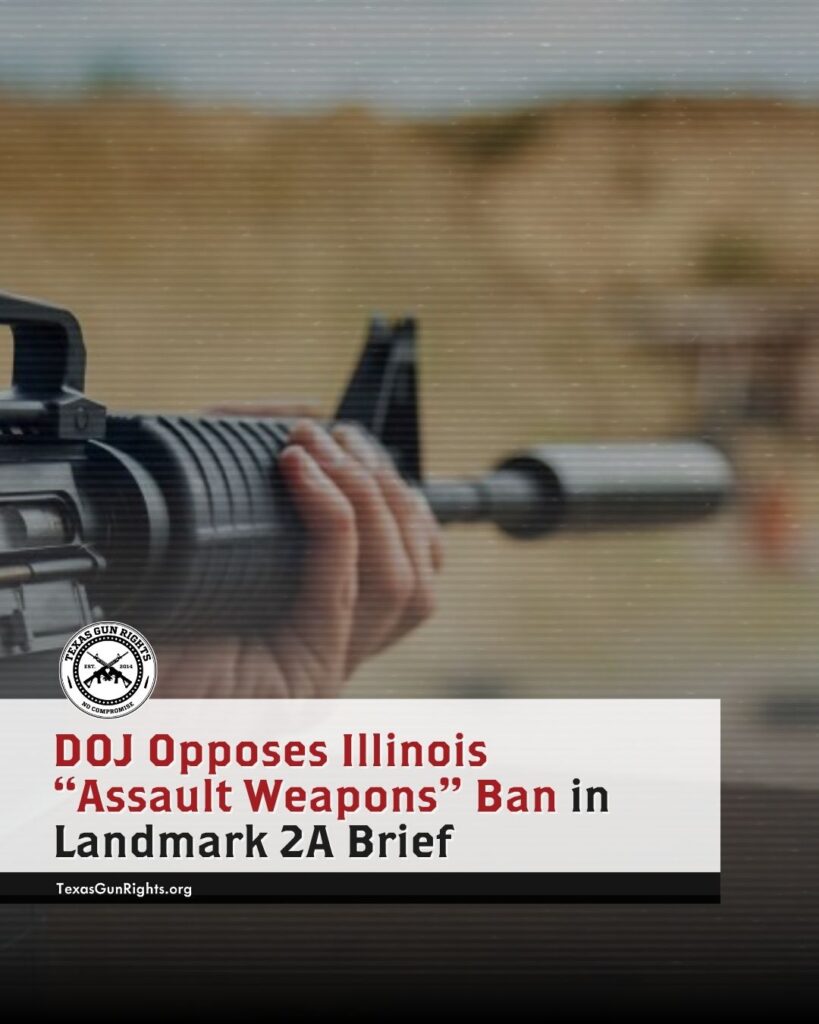
In a stunning development for Second Amendment advocates, the U.S. Department of Justice — under President Donald Trump’s leadership — has filed a powerful amicus brief in Barnett v. Raoul, urging the Seventh Circuit Court of Appeals to strike down Illinois’ sweeping “assault weapons” ban. The DOJ’s Civil Rights Division, now led by Assistant Attorney […]
Senate Parliamentarian Guts Pro-Gun Provisions from BBB — TXGR Demands Override
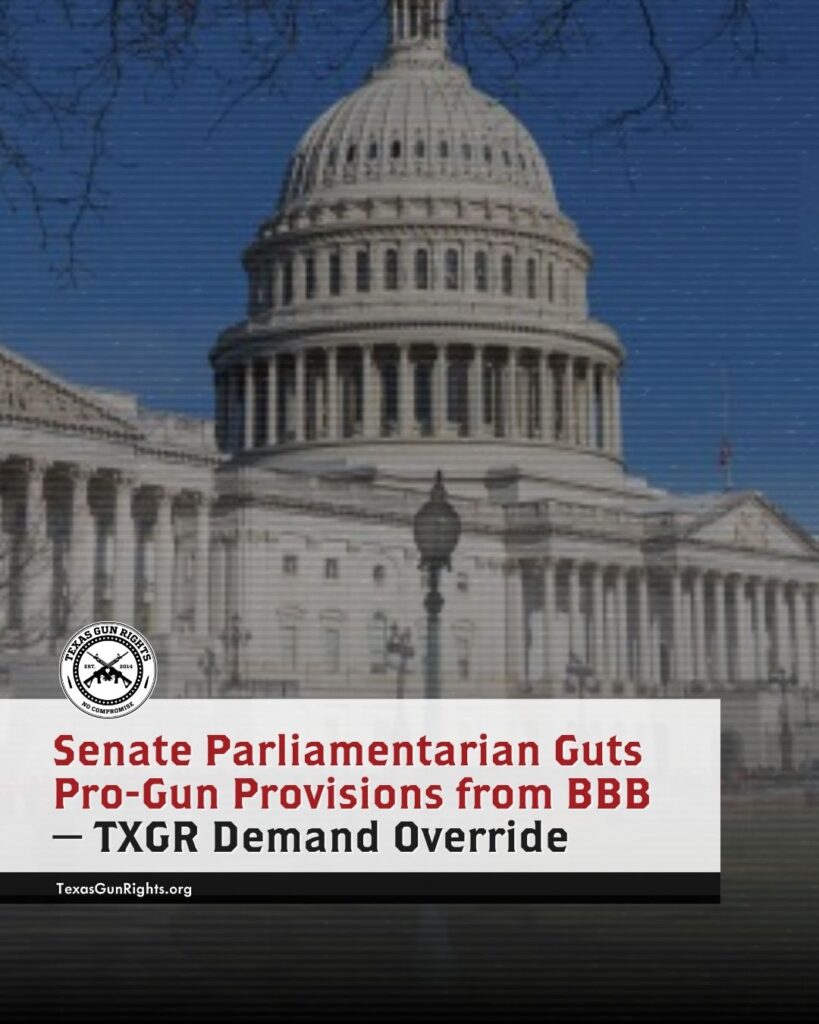
Washington, D.C. – In a midnight move that has Second Amendment supporters fuming, the Chuck Schumer-backed Senate Parliamentarian struck down key gun rights language in the “Big Beautiful Bill” (BBB), caving to Democrat pressure and falsely claiming that long-sought reforms like the Hearing Protection Act (HPA) and the SHORT Act violate the Byrd Rule. The […]
Abbott Signs Four More Pro-Gun Bills — Including 2 Top TXGR Priority Bills
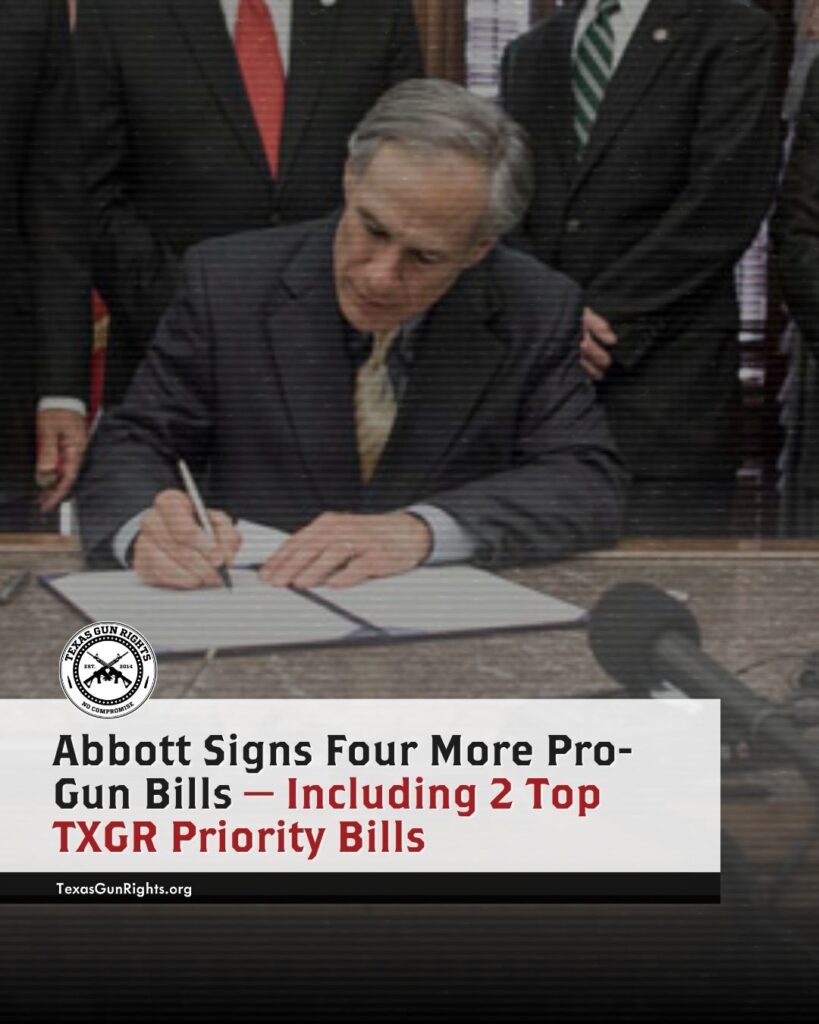
Weatherford, TX — Governor Greg Abbott has reinforced Texas’ status as a growing stronghold for the Second Amendment, signing four major pro-gun bills into law before the veto deadline — including a Texas Gun Rights (TXGR) top priority bill, and legislation backed by Gun Owners of America (GOA) that was strongly supported by TXGR. This […]
Democrats Plotting to Gut NFA Reforms — CALL NOW!

Dear Patriot, For the first time in nearly a century, we’re on the verge of scoring MAJOR victories in our fight to restore the Second Amendment and dismantle the worst parts of the National Firearms Act (NFA). Tucked inside the “Big Beautiful Bill” (BBB) is a bold, pro-gun package that includes: Elimination of the $200 […]
TXGR Delivers Grassroots Show of Force to White House: Gun Owners Urge Trump to Oppose Cornyn Endorsement
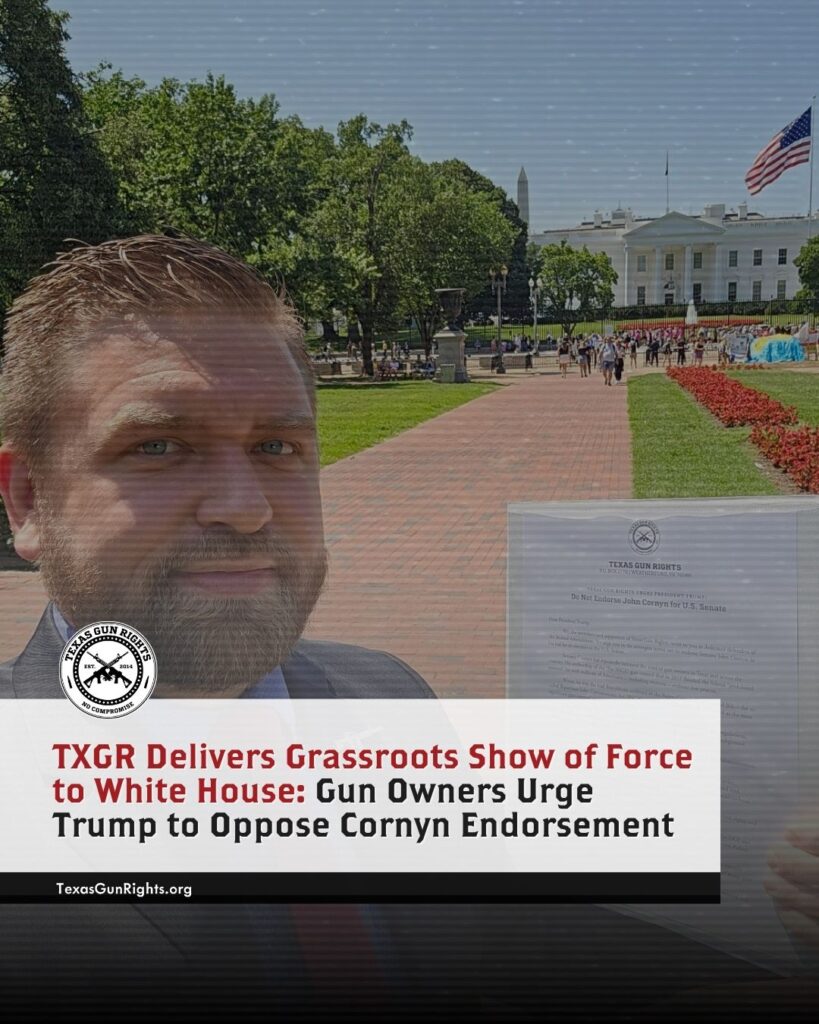
Washington, D.C. — On Friday, June 20, Texas Gun Rights President Chris McNutt made a high-profile stop in the nation’s capital — not to rub elbows with the establishment, but to deliver a clear, unambiguous message from nearly 10,000 Texas gun owners: “Do NOT endorse John Cornyn for U.S. Senate.” With the weight of the […]
NAGR Discovers Fix Needed for Suppressors In Big Beautiful Bill
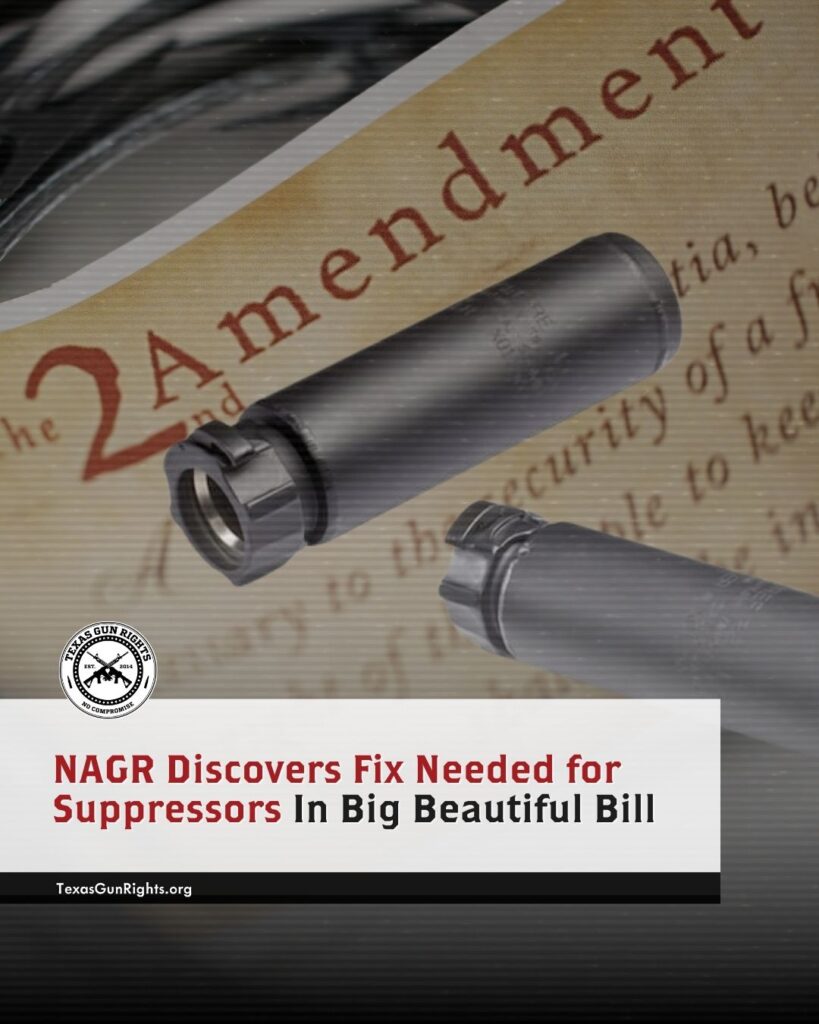
Weatherford, TX — In a historic move for gun owners, the U.S. Senate’s latest version of the “Big Beautiful Bill” includes sweeping reforms to the National Firearms Act (NFA), dismantling key provisions that have trampled Second Amendment rights since 1934. At the heart of the bill—dubbed by many as a fusion of the SHORT Act […]
SCOTUS May Be Signaling End of “Assault Weapons Bans”
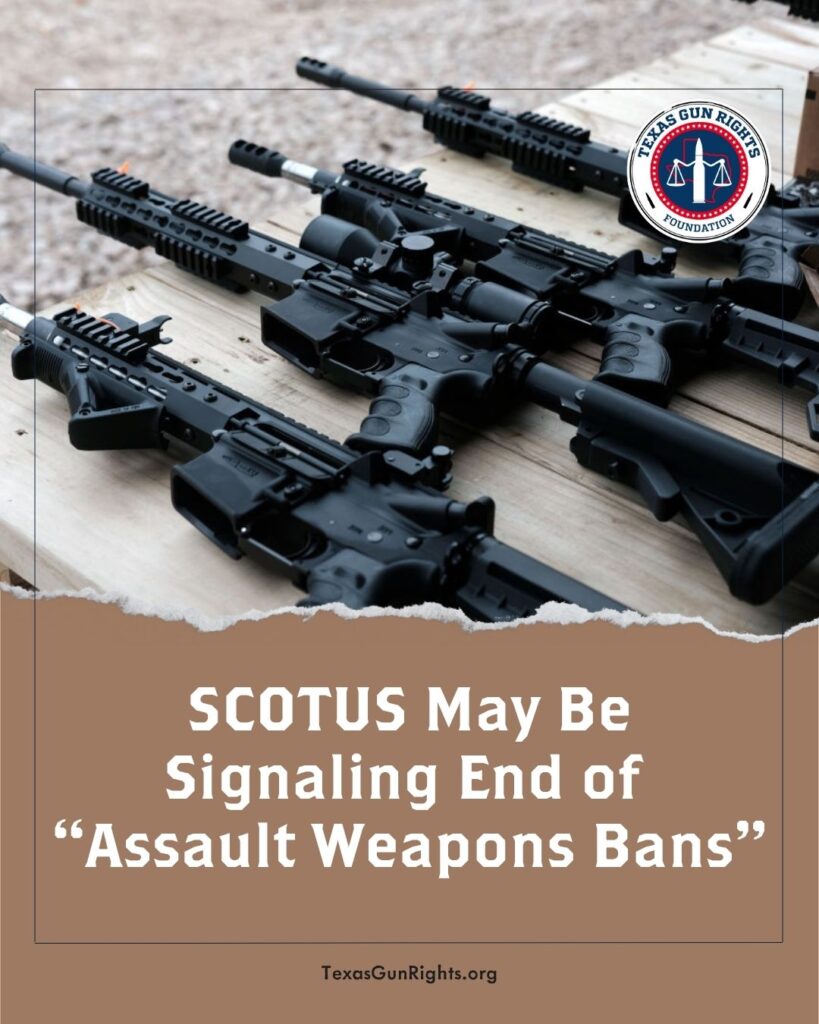
Weatherford, TX — The Supreme Court of the United States may have quietly signaled a tectonic shift in the Second Amendment landscape: the beginning of the end for so-called “assault weapons” bans, particularly those targeting the AR-15 rifle. Though the Court has not yet granted certiorari on a direct challenge to such bans, recent language […]
Senate Adds SHORT Act to ‘Big Beautiful Bill’ While Democrats Push to Strip Hearing Protection Act
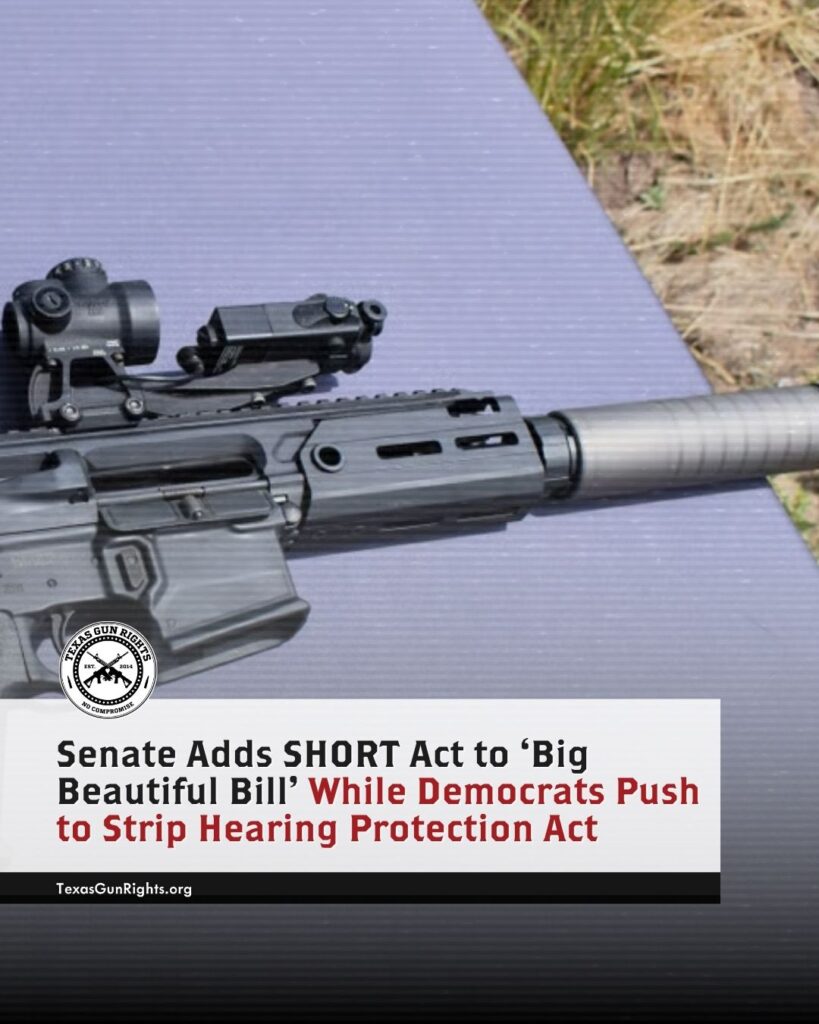
Washington, D.C. — In a bold legislative move, the U.S. Senate has added language from the SHORT Act—which would deregulate short-barreled rifles (SBRs) under federal law—to the sprawling legislative package conservatives are now calling the “Big Beautiful Bill.” The move came just as Democrats in the House ramped up efforts to strip the Hearing Protection […]
David Hogg Removed from DNC Position; Anti-gun Threat Remains
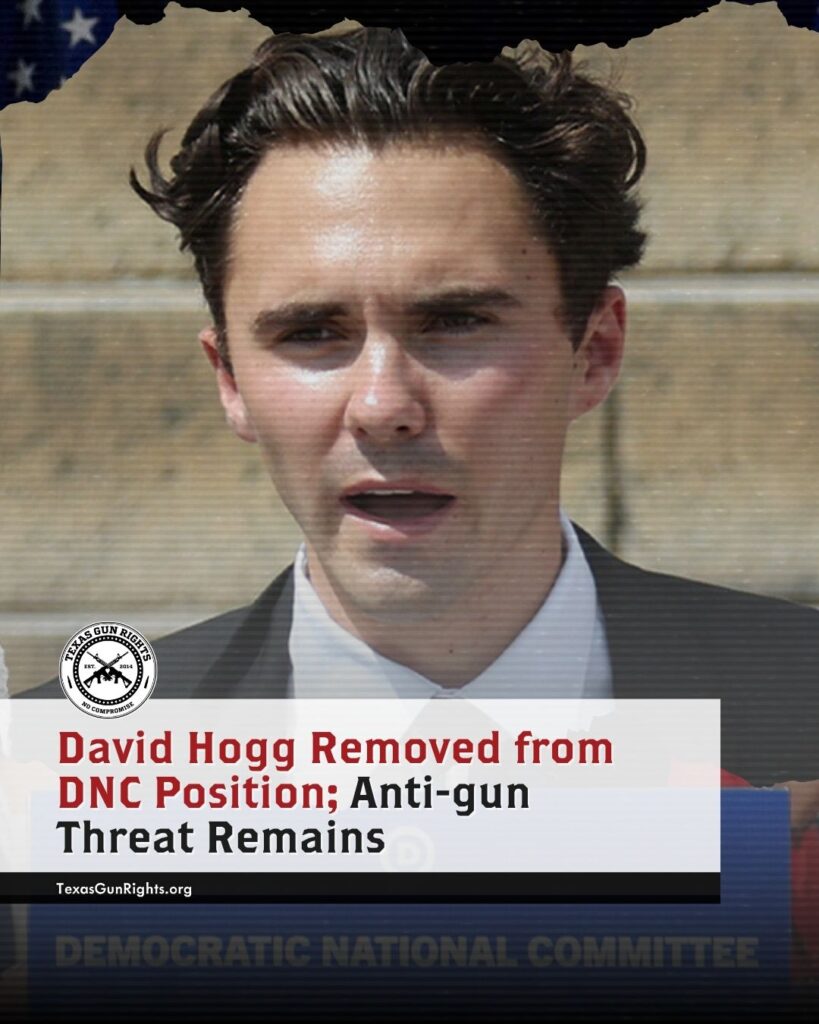
By Chris McNutt Weatherford — You may have heard the news: David Hogg is out as Vice Chair of the Democratic National Committee. But don’t let the headlines fool you. This isn’t the end of Hogg’s anti-gun crusade — it’s just a tactical shift. The DNC’s official excuse was that Hogg’s election violated “gender diversity rules.” But anyone […]
Texas Democrats Elect Anti-Gun Fundraiser Kolby Duhon as Finance Vice Chair

Weatherford, TX — In a move solidifying the leftward shift of the Texas Democratic Party, progressive activist and prolific fundraiser Kolby Duhon has been elected as the party’s new Vice Chair for Finance. Duhon’s appointment comes amid growing coordination between national progressive networks and Texas-based organizers aiming to turn the Lone Star State into the next political […]


